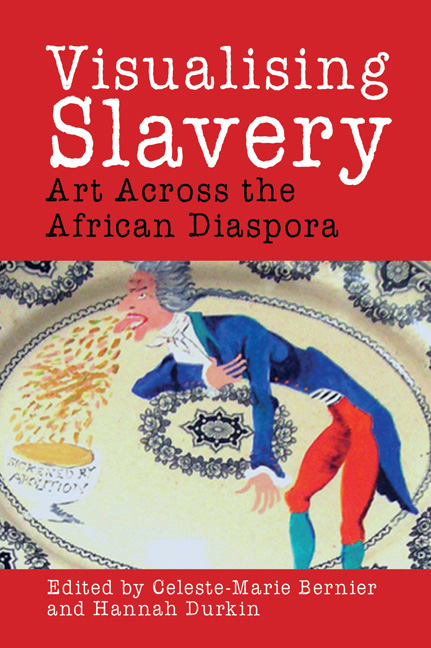Book contents
- Frontmatter
- Dedication
- Contents
- List of Illustrations
- Acknowledgements
- Introduction: ‘Inside the Invisible’: African Diasporic Artists Visualise Transatlantic Slavery
- Part I Slavery and Memory in Contemporary African Diasporic Art
- Chapter 1 Lost and Found at the Swap Meet: Betye Saar and the Everyday Object
- Chapter 2 Preserves
- Chapter 3 What Goes without Saying
- Chapter 4 Spectres in the Postcolonies: Reimagining Violence and Resistance
- Chapter 5 Strategic Remembering and Tactical Forgetfulness in Depicting the Plantation: A Personal Account
- Part II Historical Iconography and Visualising Transatlantic Slavery
- Part III African Diasporic Monuments and Memorialisation
- Part IV Contemporary Legacies in African Diasporic Art
- Afterword: Against the Grain: Contingency and Found Objects
- Notes on Contributors
- Index
- Platesection
Chapter 1 - Lost and Found at the Swap Meet: Betye Saar and the Everyday Object
from Part I - Slavery and Memory in Contemporary African Diasporic Art
- Frontmatter
- Dedication
- Contents
- List of Illustrations
- Acknowledgements
- Introduction: ‘Inside the Invisible’: African Diasporic Artists Visualise Transatlantic Slavery
- Part I Slavery and Memory in Contemporary African Diasporic Art
- Chapter 1 Lost and Found at the Swap Meet: Betye Saar and the Everyday Object
- Chapter 2 Preserves
- Chapter 3 What Goes without Saying
- Chapter 4 Spectres in the Postcolonies: Reimagining Violence and Resistance
- Chapter 5 Strategic Remembering and Tactical Forgetfulness in Depicting the Plantation: A Personal Account
- Part II Historical Iconography and Visualising Transatlantic Slavery
- Part III African Diasporic Monuments and Memorialisation
- Part IV Contemporary Legacies in African Diasporic Art
- Afterword: Against the Grain: Contingency and Found Objects
- Notes on Contributors
- Index
- Platesection
Summary
The career: When Betye Saar, born in 1926 in Pasadena, talks about her career, it's as if she's speaking to her friends about their gardens, their houses and their children; she interweaves stories of treasure-hunting then expands into politics and combines the complicated history of her family with the history of her people. She is clear that her career development was never conducted in the fast lane and would explain the early slow pace and gradual visibility with the admission that her early work could have been of better quality. She is now represented in the collections of many of the major museums in America and there are dozens of references to her in essays and interviews in many publications. She lives in Los Angeles, is represented by Michael Rosenfeld in New York, but seems never to have shown significantly in Europe.
Making context: Gathering and reusing or recycling has been a favourite fabrication method for a number of artists besides me and Betye Saar, including Faith Ringgold, John Outterbridge, Pitika Ntuli, Donald Rodney, Beverly Buchanan, Alison and Lesley Saar, as well as Chris Ofili and David Hammons.
Making methods: The use of readily available materials and objects that are ordinary, inexpensive or free opens up all kinds of possibilities for multiple communication. Articles that have been used and discarded can sometimes seem to have a special meaning or at the very least a certain familiarity that encourages conversation.
Artist's role: Betye Saar's work has been described as folksy, naïve and even as outsider art. She doesn't see this as a negative criticism and readily claims for herself the role of a real person making artwork at a professional level. She has always had an important part to play in the recent history of American art but appears to be constantly battling to remain within the mainstream, often by stealth perhaps, but certainly not by any means possible. Her work is full of satire, humour and wit.
Studio: Years ago, making art in her converted kitchen meant that she could care for her children at the same time. It has also, at times, perhaps restricted the scale of the work and meant that installations didn't become whole until they were installed in the showing space.
- Type
- Chapter
- Information
- Visualising SlaveryArt Across the African Diaspora, pp. 17 - 28Publisher: Liverpool University PressPrint publication year: 2016

